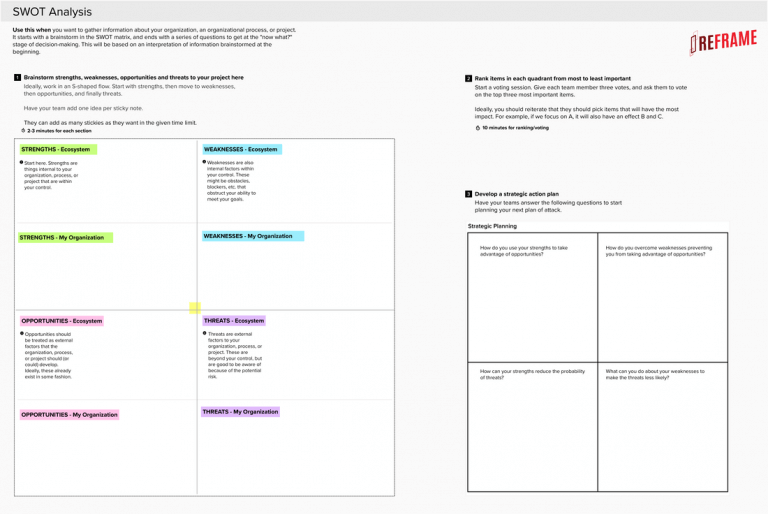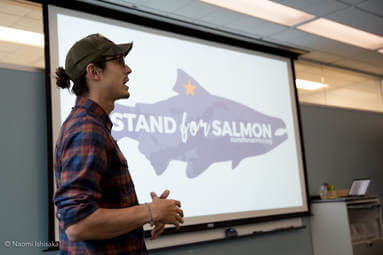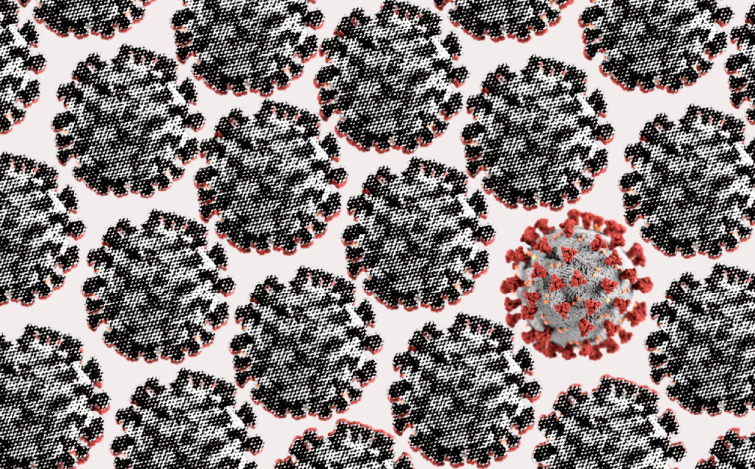At ReFrame, drawing from our experiences inside of other crisis moments, two of the tools we’ve been using to coordinate our team in the time of COVID-19 is individual and organizational threat modeling & SWOT planning.
Threat Modeling
Threat modeling is a practice to prepare individuals and organizations in the event of threat – like the COVID-19 pandemic – and identifying ways to mitigate or lessen the impact of the threat, or eliminate the impact all together.
We use a five-step exercise to build our threat model.
1. Identify the Threat
This is the crucial first step. A threat is something that has happened, is happening or you can with some level of certainty assume will happen. If we don’t know what we’re up against, we can’t plan to lessen or eliminate the impact of it. For multiple threats, create multiple threat models.
2. Name the Impact Areas
Impact areas are a thing, a person or persons, or an activity that will be negatively affected by the threat. If we can assess where the threat will have a negative impact, then we have a better sense of where to focus our efforts.
3. Think through the Potential Outcomes
Potential Outcomes are what you think will happen to the impact areas if the threat succeeds. This can address both the direct and indirect results from the threat’s success. If we can think through possible outcomes, we can think of possible actions to either lessen the effect of the threat or eliminate the effect of the threat all together.
4. Action Planning: Mitigation
These are the actions you can take to lessen the effect of the threat on the impact area. This does not mean that you have mitigated the threat in and of itself, but rather the impact on a particular person, place, thing or action/activity. There are different actions for different risk levels as individuals and collectives, and it’s good to map those out if you can.
5. Action Planning: Elimination
These are the actions you can take to eliminate the threat. This does not imply that the threat is eliminated, but rather it means that the impact of the threat is eliminated.
We have a Google Slide template for threat modeling, a linear approach through the five steps.
Another idea is to create a flowchart like this.
Last, but not least, inside of crisis moments things are always changing. One design process we like to help us adapt our threat models to shifting conditions is called PAI: Postulate, Assess, Iterate. It means that as we do our threat model, we ask questions and brainstorm. After completing it, we assess it with ourselves and those we work with and care about. After we assess it, we then iterate or develop it further to respond to the assessment.
Identifying Strengths, Weaknesses, Opportunities, and Threats (SWOT)
Another tool we used as an organization is called SWOT, a tool that helps us identify our strengths, weaknesses, opportunities, and threats. To further develop your strategic action plan use the SWOT template we’ve developed to help you answer strategic questions that will assess the strengths, tools, and resources at hand.
In addition to looking at the organizational level, we added an extra layer on it to look at the movement ecosystem your organization is a part of as well.
- Identify your strengths, weaknesses, opportunities, and threats for your organization and for the ecosystem you are a part of.
- Rank what you’ve come up with for each section.
- Answer the following questions to start planning concrete steps.
- How do you use your strengths to take advantage of opportunities?
- How do you overcome weaknesses preventing you from taking advantage of opportunities?
- How can your strengths reduce the probability of threats?
- What can you do about your weaknesses to make the threats less likely?















.jpeg)


.png)

%20(1).png)




























